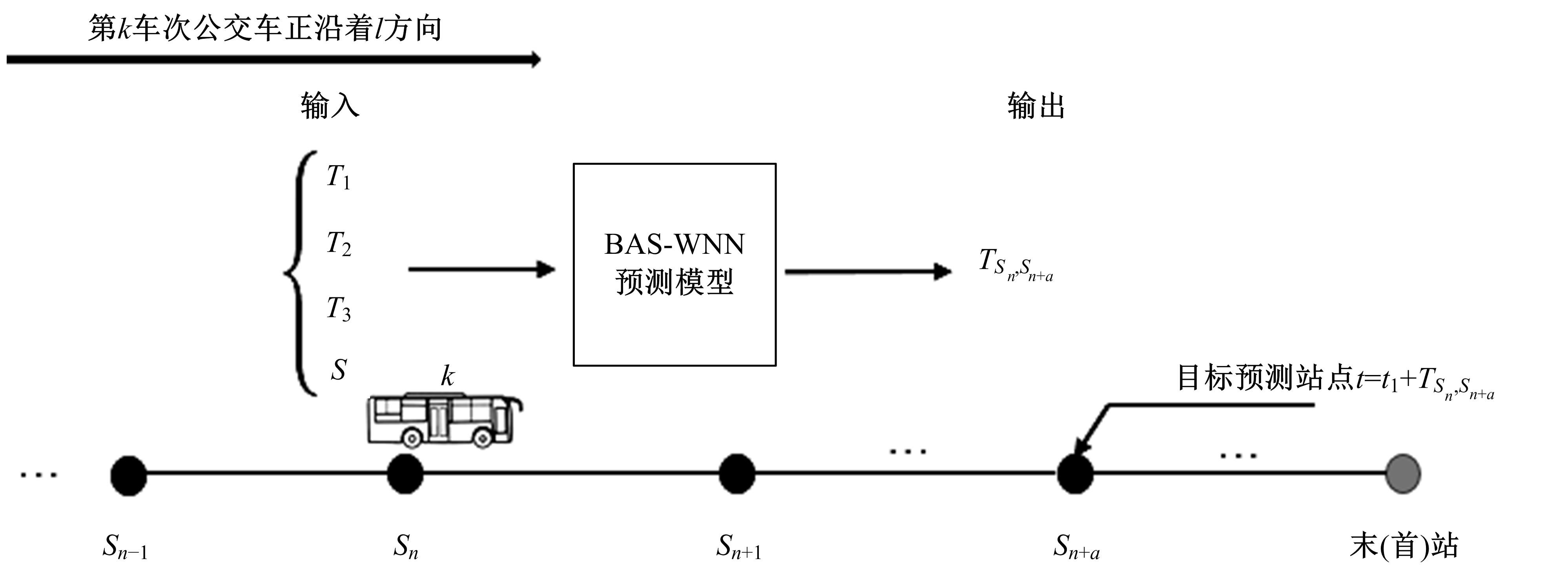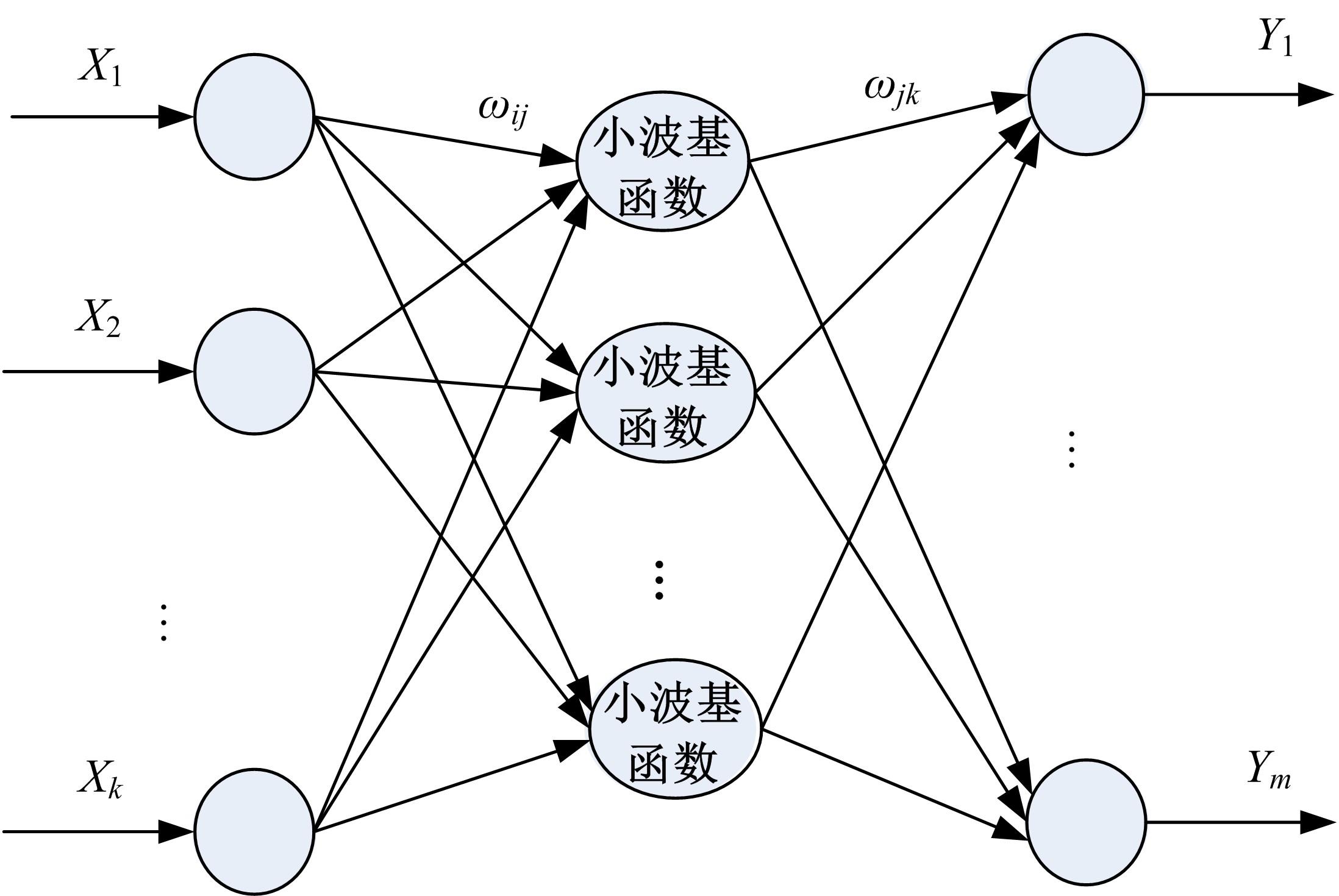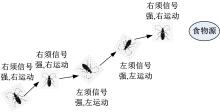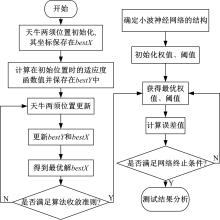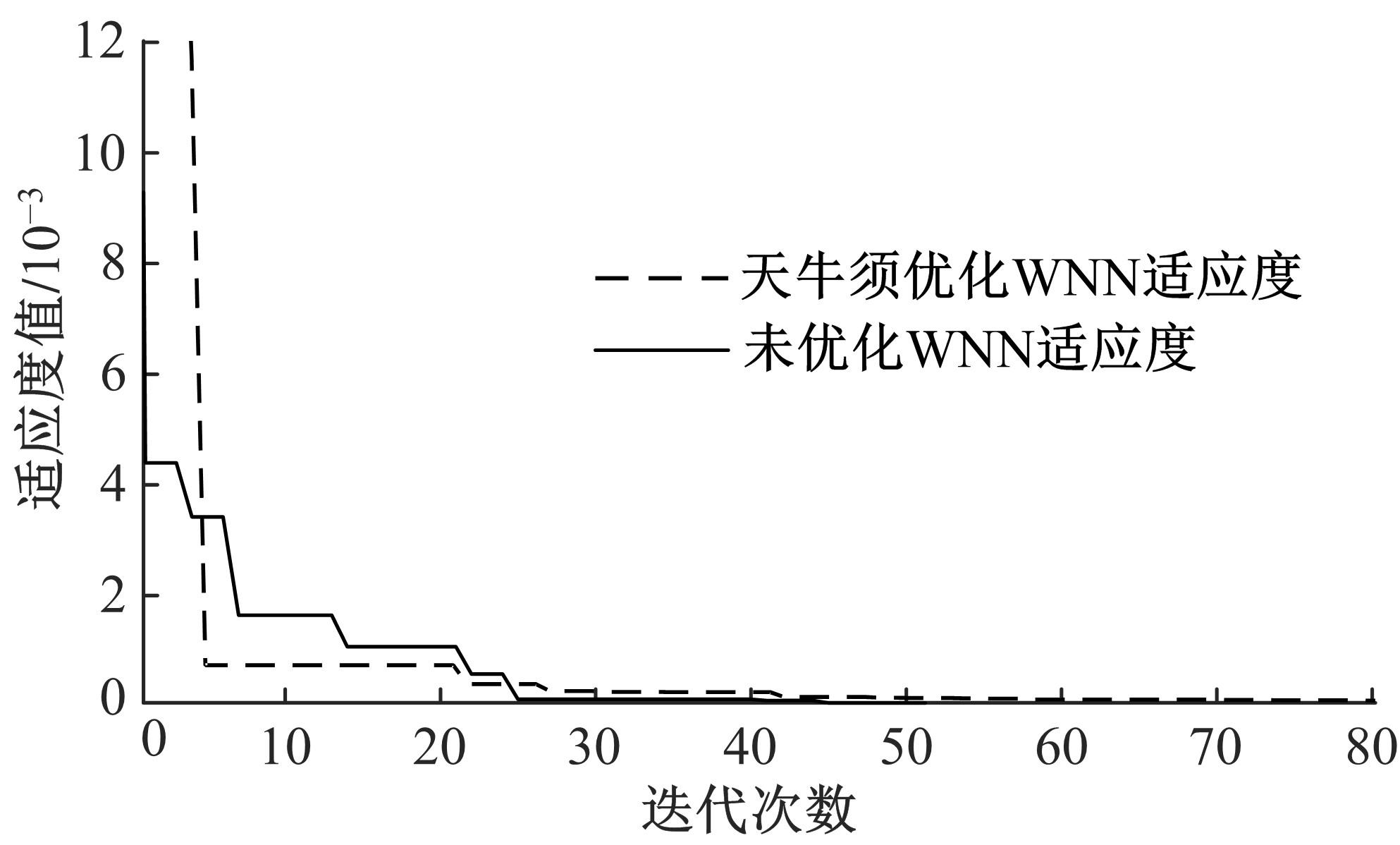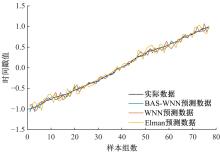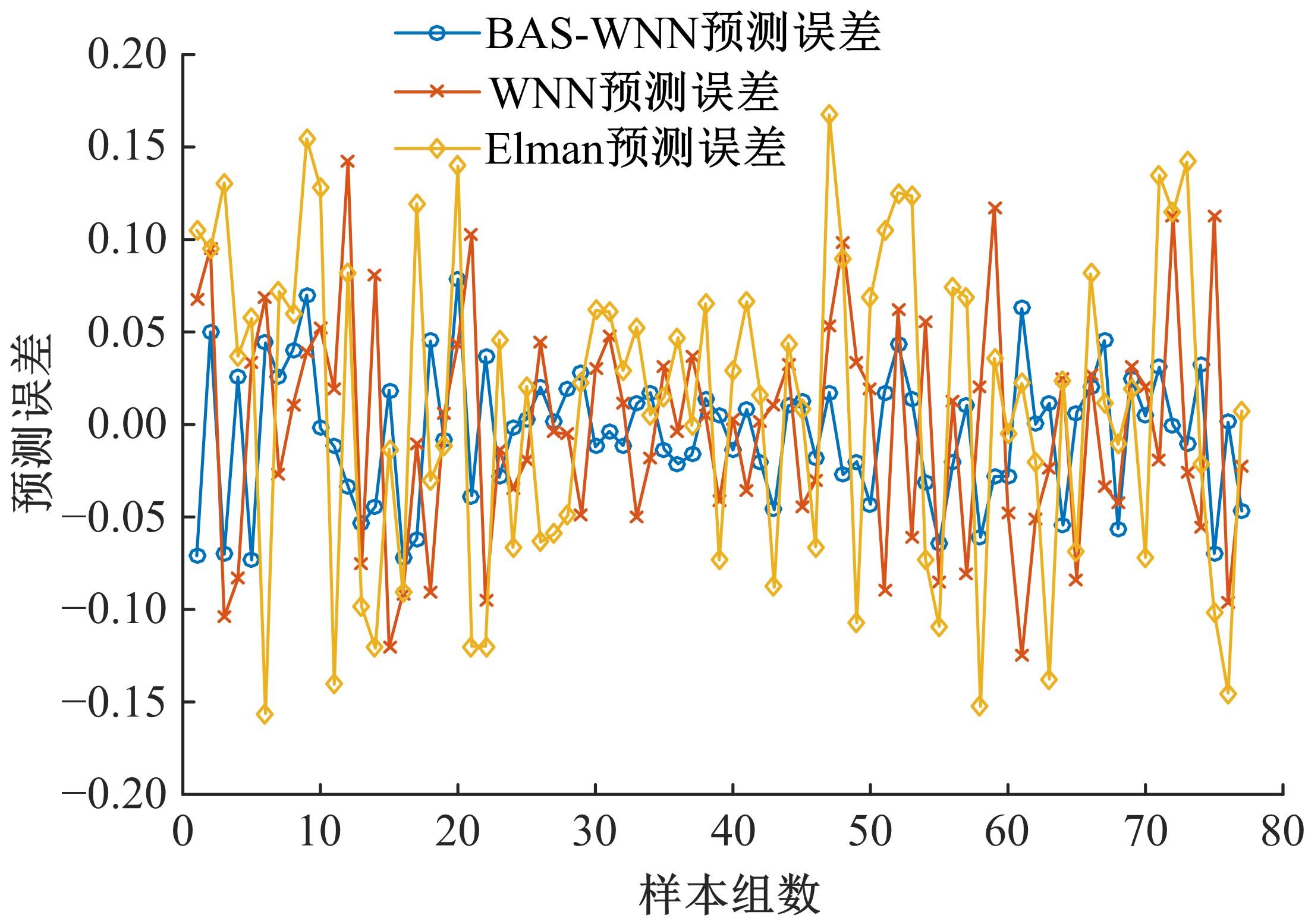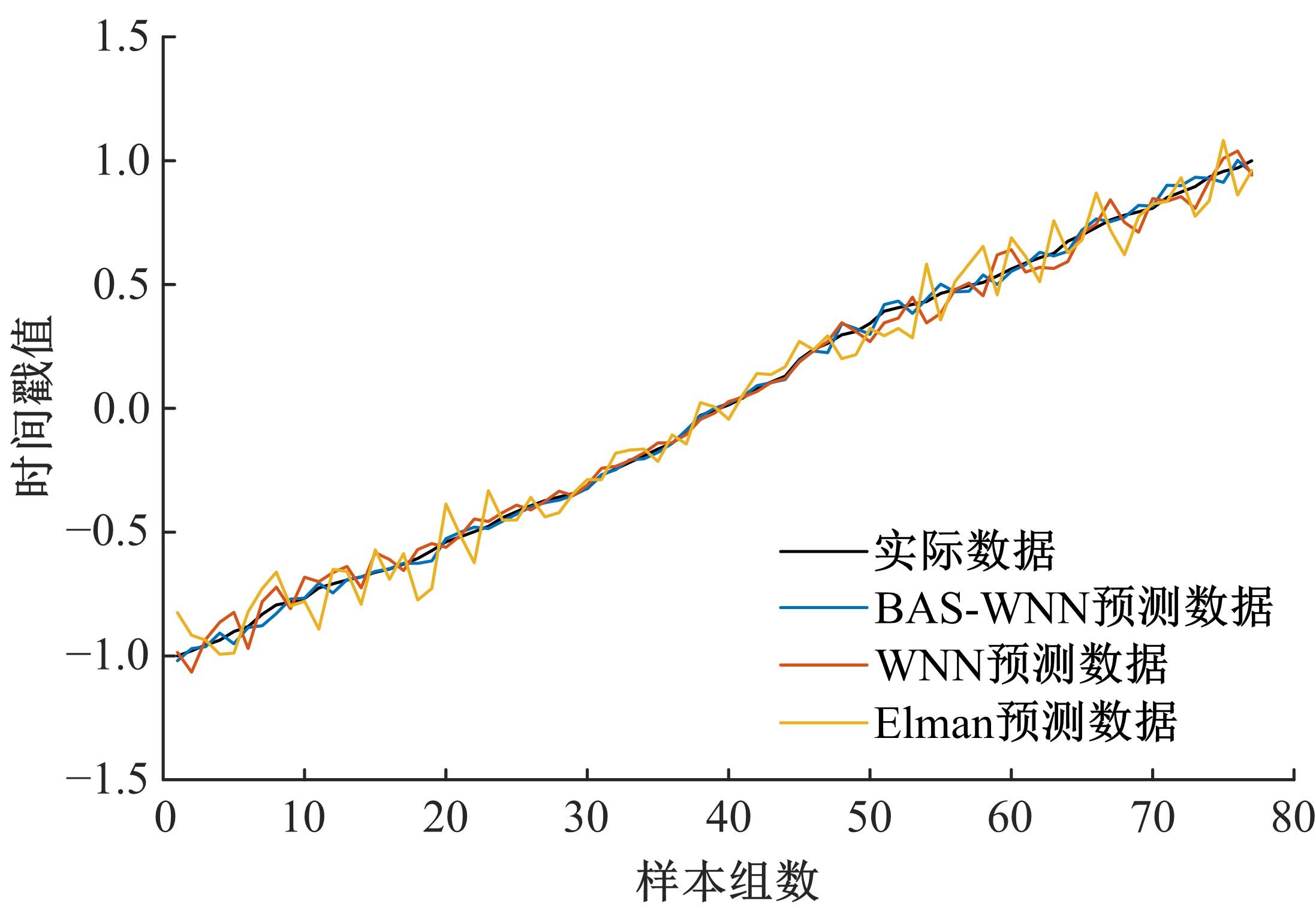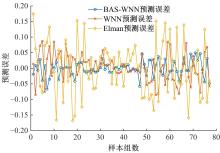Journal of Jilin University(Engineering and Technology Edition) ›› 2022, Vol. 52 ›› Issue (1): 110-117.doi: 10.13229/j.cnki.jdxbgxb20191042
Bus arrival time prediction based on wavelet neural network optimized by Beetle Antennae Search
Xian-yan KUANG( ),Hui-chao LUO,Rui ZHONG,Peng OUYANG
),Hui-chao LUO,Rui ZHONG,Peng OUYANG
- School of Electrical Engineering and Automation,Jiangxi University of Science and Technology,Ganzhou 341000,China
CLC Number:
- U491
| 1 | Cruz Pedro, Rodrigo S,Couto H, et al. An algorithm for sink positioning in bus-assisted smart city sensing [J]. Future Generation Computer Systems, 2019, 93(4): 761-769. |
| 2 | Lin Y, Yang X, Zou N, et al. Real-time bus arrival time prediction: case study for Jinan, China [J]. Journal of Transportation Engineering, 2013, 139(11): 1133-1140. |
| 3 | Jeong R, Rilett L. Bus arrival time prediction using artificial neural network model[C]∥IEEE Intelligent Transportation Systems Conference, Washington DC, USA, 2004:988-993. |
| 4 | 汪磊,左忠义.基于 MLR 的公交车行程时间预测模型[J].大连交通大学学报, 2015, 36(2):1-5. |
| Wang Lei, Zuo Zhong-yi. Bus travel time prediction based on MLR [J]. Journal of Dalian Jiaotong University, 2015, 36(2):1-5. | |
| 5 | Shalaby A, Farhan A. Bus travel time prediction model for dynamic operations control and passenger information systems[C]∥The 82nd Annual Meeting of the Transportation Research Board, Washington DC,USA, 2003. |
| 6 | 于滨,杨忠振,曾庆成.基于SVM和Kalman滤波的公交车到站时间预测模型[J].中国公路学报,2008(2):89-92, 97. |
| Yu Bin, Yang Zhong-zhen, Zeng Qing-cheng. A bus arrival time prediction model based on SVM and Kalman filter[J]. China Journal of Highway and Transport,2008(2):89-92, 97. | |
| 7 | 季彦婕, 陆佳炜, 陈晓实, 等. 基于粒子群小波神经网络的公交到站时间预测[J]. 交通运输系统工程与信息, 2016, 16(3):60-66. |
| Ji Yan-jie, Lu Jia-wei, Chen Xiao-shi, et al. Bus-to-station time prediction based on particle swarm wavelet neural network[J]. Journal of Transportation Systems Engineering and Information Technology, 2016, 16(3): 60-66. | |
| 8 | Yu H, Wu Z, Chen D, et al. Probabilistic prediction of bus headway using relevance vector machine regression[J]. IEEE Transactions on Intelligent Transportation Systems, 2017, 18(7):1772-1781. |
| 9 | 李华民, 吴俊美, 孙棣华, 等. 基于RFID电子车牌数据的公交行程时间预测方法[J]. 中国公路学报, 2019, 32(8):165-173, 182. |
| Li Hua-min, Wu Jun-mei, Sun Di-hua, et al. Bus travel time prediction method based on RFID electronic license plate data[J]. China Journal of Highway and Transport, 2019, 32(8): 165-173, 182. | |
| 10 | 刘迎, 过秀成, 周润瑄, 等. 基于多源数据融合的干线公交车辆行程时间预测[J]. 交通运输系统工程与信息, 2019(4):124-129. |
| Liu Ying, Guo Xiu-cheng, Zhou Run-xuan, et al. Trunk bus travel time prediction based on multi-source data fusion[J]. Transportation Systems Engineering and Information, 2019(4):124-129. | |
| 11 | 季彦婕,陈晓实,王炜,等.基于小波变换和粒子群小波神经网络组合模型的有效停车泊位短时预测[J]. 吉林大学学报:工学版,2016,46(2):399-405. |
| Ji Yan-jie, Chen Xiao-shi, Wang Wei, et al. Short-term prediction of effective parking berth based on wavelet transform and particle swarm wavelet neural network combined model[J]. Journal of Jilin University (Engineering and Technology Edition), 2016,46(2):399-405. | |
| 12 | Pauline Ong, Zarita Zainuddin. Optimizing wavelet neural networks using modified cuckoo search for multi-step ahead chaotic time series prediction [J]. Applied Soft Computing, 2019, 80: 374-386. |
| 13 | Jiang X Y, Li S. BAS: beetle antennae search algorithm for optimization problems [DB/OL].[2017-11-22]. . |
| 14 | Jiang X Y, Li S. Beetle antennae search without parameter tuning (BAS-WPT) for multi-objective optimization [DB/OL].[2017-11-22]. . |
| [1] | Jian ZHANG,Kun-run WU,Min YANG,Bin RAN. Double⁃ring adaptive control model of intersection during intelligent and connected environment [J]. Journal of Jilin University(Engineering and Technology Edition), 2021, 51(2): 541-548. |
| [2] | Wen-hui ZHANG,Jia-qi QIN,Hong-tao LI,Hong-xing DENG,Guo-zhu CHENG. Travel choice model between bus transit and subway considering crowding degree [J]. Journal of Jilin University(Engineering and Technology Edition), 2021, 51(1): 200-205. |
| [3] | ZHAO Hong-wei, LIU Yu-qi, DONG Li-yan, WANG Yu, LIU Pei. Dynamic route optimization algorithm based on hybrid in ITS [J]. 吉林大学学报(工学版), 2018, 48(4): 1214-1223. |
| [4] | JIANG Gui-yan, LIU Bin, SUI Xiao-yan, MA Ming-fang. Real time information collection of passenger flow in public transportation based on bus IC card charging system [J]. 吉林大学学报(工学版), 2016, 46(4): 1076-1082. |
| [5] | JI Yan-jie, CHEN Xiao-shi, WANG Wei, HU Bo. Short-term forecasting of parking space using particle swarm optimization-wavelet neural network model [J]. 吉林大学学报(工学版), 2016, 46(2): 399-405. |
| [6] | PAN Yi-yong, MA Jian-xiao, SUN Lu. Optimal path in dynamic network with random link travel times based on reliability [J]. 吉林大学学报(工学版), 2016, 46(2): 412-417. |
| [7] | PAN Yi-yong, SUN Lu. Adaptive reliable shortest path problem in stochastic traffic network [J]. 吉林大学学报(工学版), 2014, 44(6): 1622-1627. |
| [8] | ZHANG Xiao-liang, ZHAO Shu-zhi, LIU Hua-sheng, GAO Xiang-tao. Improvement of public transportation assignment Logit model during peak period [J]. 吉林大学学报(工学版), 2014, 44(6): 1616-1621. |
| [9] | ZHAO Ying-ying, QU Zhao-wei, JIANG Sheng, HU Hong-yu, HU Jin-hui. Pedestrian crossing speed characteristic based on video detection [J]. 吉林大学学报(工学版), 2013, 43(02): 298-303. |
| [10] | SUN Feng, WANG Dian-hai, HU Hong-yu, MA Dong-fang. Optimizing skip-stop operation of bus transit based on analysis of travel time [J]. 吉林大学学报(工学版), 2012, 42(增刊1): 179-183. |
| [11] | YANG Zhao-sheng,SUN Xiao-mei,SUN Peng-cheng. Signal priority control strategy and implementation for emergency vehicle at single intersection under traffic accidents [J]. 吉林大学学报(工学版), 2011, 41(03): 640-644. |
| [12] | LI Juan,SHAO Chun-fu,YANG Li-ya. Pedestrian detection based on improved Gaussian mixture model [J]. 吉林大学学报(工学版), 2011, 41(01): 41-0045. |
| [13] | YANG Zhao-Sheng, YUAN Man-Rong, YANG Wei. Route selection model in emergency evacuation based on quasiuser optimum dynamic traffic assignment [J]. 吉林大学学报(工学版), 2010, 40(增刊): 133-0137. |
| [14] | DONG Chun-Jiao, SHAO Chun-Fu, CHEN Xiao-Ming, LI Juan. Road network dynamic splitting based on timespace characteristic of traffic flow [J]. 吉林大学学报(工学版), 2010, 40(06): 1528-1532. |
| [15] | WANG Dian-hai, HU Hong-yu, LI Zhi-hui, QU Zhao-wei. Detection and recognition algorithm of illegal parking [J]. 吉林大学学报(工学版), 2010, 40(01): 42-0046. |
|
||

